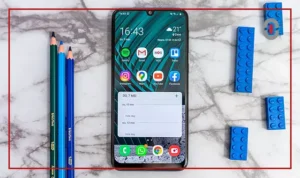AI Overview
| Category | Summary |
| Topic | Mobile-First Content: Creating Multichannel Experiences Korean Audiences Love |
| Purpose | To highlight how brands can engage Korea’s hyper‑connected consumers through mobile‑first, multichannel localization strategies. |
| Key Insight | Korean audiences live mobile‑first lives and expect authenticity, cultural nuance, and seamless platform‑specific experiences. |
| Best Use Case | For global brands, marketers, and streaming services expanding into Korea’s unique digital ecosystem. |
| Risk Warning | Ignoring cultural nuances, neglecting Naver SEO, or failing to adapt UI for Korean text can undermine trust and brand reputation. |
| Pro Tip | Integrate KakaoTalk campaigns, Naver reviews, Coupang e‑commerce, and OTT/YouTube promotions into one seamless multichannel strategy for maximum impact. |
South Korea is one of the most digitally advanced markets in the world. With near-universal smartphone penetration, hyper-fast internet speeds, and a population eager to adopt the newest platforms, Korea has become a benchmark for mobile-first consumer engagement. For brands looking to succeed here, translation alone is not enough. Winning over Korean audiences requires a Korean localization multichannel strategy—one that adapts not just language, but also cultural nuance, tone, and platform-specific behavior.
This is where global campaigns often stumble. Western marketing models don’t seamlessly fit into Korea’s unique digital ecosystem, where KakaoTalk messages, Naver blogs, and OTT streaming platforms shape daily habits. To resonate with Korean consumers, brands must rethink how they deliver content, ensuring it feels native to the platforms where engagement happens most.
At 1-StopAsia, we help brands bridge the gap between global messaging and local resonance. By combining linguistic expertise with digital strategy, we enable brands to create multichannel marketing Korea campaigns that truly connect.
Understanding Korean Consumers
Korean consumers are among the most connected in the world. They live mobile-first lives, seamlessly blending commerce, entertainment, and communication on their smartphones. Unlike in some markets where consumers might split time between desktop and mobile, in Korea the smartphone is the primary touchpoint for nearly all digital interactions.
But it’s not just about being mobile-first. Korean audiences are highly trend-driven and rely heavily on community trust. Peer reviews, influencer endorsements, and social proof weigh significantly in purchase decisions. A well-written Naver blog review or a KakaoTalk recommendation from a friend can be more persuasive than any brand message.
Brands entering this market must remember: Korean consumers want authenticity, cultural alignment, and convenience—all delivered through the platforms they already use.
Key Platforms & Channels for Multichannel Engagement
To build an effective Korean localization multichannel strategy, brands must adapt to Korea’s distinct digital ecosystem. Here are the pillars of Korean consumer engagement:
KakaoTalk: Beyond Messaging
KakaoTalk isn’t just a chat app—it’s a lifestyle platform. With its commerce features, branded channels, and sticker-based marketing, it’s the most direct way to stay connected with Korean consumers. Successful campaigns here often involve KakaoTalk localization, from adapting stickers with culturally relevant humor to creating personalized push notifications that align with Korean communication styles.
Naver: The Heart of Discovery
While Google dominates globally, in Korea Naver content localization is essential. Naver is not only the country’s leading search engine but also home to blogs, forums, and shopping integrations. Localized blog content, community-driven reviews, and keyword strategies tailored to Naver’s unique SEO rules are critical for brand visibility. Brands that neglect Naver risk being virtually invisible to Korean consumers, no matter how strong their presence is elsewhere. For long-term success, companies must treat Naver as the starting point for discovery and trust-building in Korea, making it central to any Korean consumer engagement strategy.
Coupang: Seamless Commerce
Known as the “Amazon of Korea,” Coupang sets the standard for UX-driven e-commerce. Success on this platform requires not just product listings but localized UI design, Korean-language customer support, and logistics adapted to Korean consumer expectations. For brands building a Korean localization multichannel presence, optimizing Coupang is non-negotiable because it influences purchase behavior across other digital touchpoints. Integrating Coupang campaigns with Naver reviews or KakaoTalk promotions creates a stronger multichannel marketing Korea strategy that aligns with consumer expectations for seamless, mobile-first shopping.
OTT Platforms: Entertainment Hubs
OTT services like TVING, Wavve, and Coupang Play dominate video consumption. For global entertainment brands, video streaming platforms Korea require localized subtitles, dubbing, and compliance with strict content regulations. Even non-entertainment brands can engage here through advertising and partnerships—if adapted correctly. Success depends on more than translation; it requires Korean localization multichannel strategies that align video content with consumer habits, device preferences, and viewing trends. Brands that connect OTT campaigns with YouTube or KakaoTalk promotions create a seamless Korean consumer engagement experience across entertainment and lifestyle channels.
YouTube & Instagram: Lifestyle Anchors
These platforms remain key for influencer-driven campaigns and brand storytelling. But Korean consumers expect a different tone here: subtitled YouTube tutorials, Instagram-friendly visuals, and influencer collaborations adapted to local aesthetics.
Best Practices for Multichannel Localization
Delivering consistent yet platform-tailored content is the foundation of successful multichannel marketing Korea campaigns. Here’s how:
- Adapt tone and visuals for each platform. KakaoTalk content can be playful, while Naver blogs require a more informative, trust-building approach. YouTube videos should emphasize visual storytelling and be subtitled in Korean. On Instagram, lifestyle-driven imagery resonates best, while OTT platforms demand longer-form storytelling. This platform-by-platform flexibility ensures a true Korean localization multichannel experience that feels natural to the audience.
- Maintain a consistent brand identity. While each platform has its own style, the core brand message must remain unified across channels. Consumers expect a brand’s voice to adapt without feeling fragmented, especially in a mobile-first environment. A clear identity builds familiarity and trust, which is critical for strong Korean consumer engagement.
- Integrate platform-native features. For example, a beauty brand could launch KakaoTalk chat stickers featuring product icons, support the campaign with Naver blog reviews, and publish YouTube tutorials demonstrating product use. This ensures touchpoints across multiple platforms while reinforcing brand identity. When paired with influencer-led Instagram posts or OTT ad placements, such campaigns form a multichannel marketing Korea strategy that drives awareness and action.
Mobile & OTT-Specific Localization Practices
Mobile-first doesn’t just mean resizing content for smaller screens. In Korea, it demands deeper adaptation:

- UI Adaptation: Korean text often takes up more space than English. Brands must design mobile interfaces with room for text expansion to avoid layout issues. If buttons, menus, or banners are not adapted, users may perceive the brand as careless or foreign.
- Localized Support: In-app FAQs, live chat, and customer service should be fully localized, including tone and formality aligned with Korean honorifics. Consumers in Korea value responsive, respectful communication, so the way support messages are phrased can make or break loyalty. Offering service in natural Korean, not just translated text, demonstrates a brand’s investment in authentic Korean consumer engagement.
- Push Notifications: Timing, tone, and content matter. Notifications sent during peak commuting hours with culturally relevant phrasing are more likely to be read and acted upon.
- OTT Video Adaptation: Subtitles and dubbing should match Korean preferences, with particular care taken to ensure natural-sounding translations. Compliance with local content regulations is also critical to avoid restrictions.
These practices don’t just optimize content—they show respect for the way Korean consumers engage with media.
Pitfalls to Avoid
Too often, global brands underestimate the complexity of Korean localization multichannel strategies. Common mistakes include:
- Copy-Pasting Western Campaigns: Directly reusing campaigns designed for Western audiences often feels out of touch in Korea.
- Ignoring Honorifics and Hierarchy: Korean language is steeped in social hierarchy. Failing to adapt tone appropriately can come across as disrespectful.
- Neglecting Mobile Fit: UI elements or campaign visuals not tested for Korean language expansion can look unprofessional and harm user trust.
Avoiding these pitfalls requires both linguistic expertise and digital know-how—something 1-StopAsia specializes in.
Conclusion
Korean consumers reward brands that deliver authentic, localized experiences across multiple channels. They notice when a campaign is thoughtfully adapted to their culture and the platforms they use daily. In today’s mobile-first landscape, success in Korea depends on more than just translation—it requires Korean localization multichannel strategies that combine cultural nuance, digital fluency, and platform expertise.
1-StopAsia is uniquely positioned to guide global brands through this process. With decades of experience in Asian markets and a deep understanding of Korea’s digital ecosystem, we help brands craft seamless, multichannel campaigns that resonate with Korean audiences.
Ready to unlock the full potential of your brand in Korea?
- Contact 1-StopAsia for tailored Korean market localization strategies.
- Download our guide on Korean consumer engagement.
- Share insights on LinkedIn with #KoreanLocalization #MultichannelMarketing #1StopAsia
